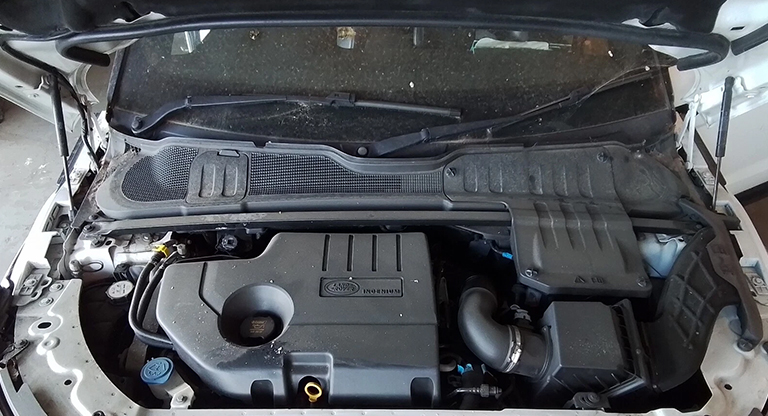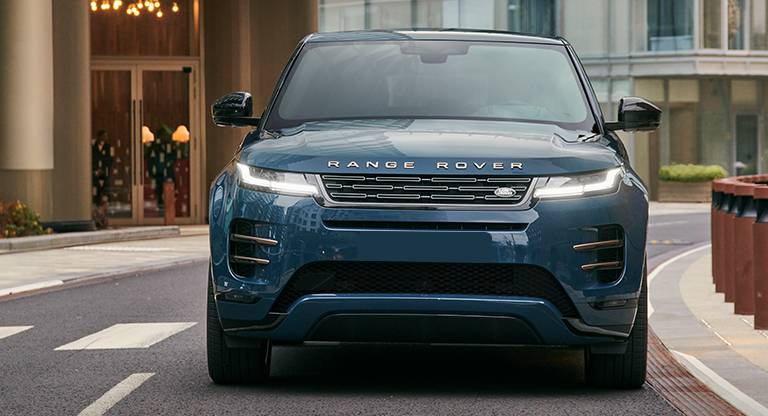- June 24,2025
Insider Tips for Picking the Best Reconditioned Evoque Engine
Buying a replacement heart for your Evoque is a big decision. You want the SUV you love back on the road, smooth and quiet, but you don’t want extra surprises on the invoice or under the hood. In the United Kingdom, many drivers now look for reconditioned units because they offer solid value and a new lease of life without the cost of brand-new parts. This guide shows you how to pick the best option and save money while you do it. You may have searched online for “Range Rover Evoque Engines for Sale” and found page after page of adverts. Some claim record-low prices, others call themselves a “Range Rover Engine Specialist” and promise fast fit service. It can be hard to know who is safe to trust. In the next section, you will learn what a rebuilt engine is, how to read the small print, and how to spot quality that lasts.
Why Choose a Reconditioned Evoque Engine
A reconditioned engine is a used unit that has been stripped, cleaned, checked, and rebuilt with new or machined-to-spec parts. It lies between buying a factory fresh brand new, and low mileage used engine. For most Evoque owners, this middle path makes sense because it offers a blend of reliability and savings. The upfront price is often half that of a new engine block, yet you still gain almost-new performance when the work is done by skilled technicians’ hands.
Because the core block remains original, fitting time is shorter, and you avoid hidden charges for extra brackets or sensors. You also cut waste; breathing new life into metal already cast means less material goes back to the smelter. A rebuilt Range Rover Evoque engine, therefore, offers good value, lower environmental impact, and the confidence to drive long miles again.
Signs Your Evoque Needs an Engine Replacement

Engines communicate before they fail. Thick blue or white smoke that lingers long after start-up indicates oil or coolant burning inside the cylinders. A steady decline in coolant without any external leak may suggest a cracked block or head-gasket failure. If the low-oil-pressure lamp remains illuminated even after a fresh service, crankshaft bearings could be worn. Knocks that increase with engine speed often originate from worn pistons or a stretched timing chain.
High crankcase pressure is yet another warning sign. Finally, check the dipstick: milky sludge indicates coolant mixing with oil, a sign of internal breach. One fault alone may not necessitate a replacement, but two or more together typically suggest that the engine is nearing the end of its useful life.
Working with a Range Rover Engine Specialist
Specialists carry diagnostic tools that talk to the Evoque’s control modules. They understand its cooling passages, stop-start software and tight engine compartment. When you call a workshop, ask how many Evoque units they rebuild each month and request proof, such as workshop photos or redacted invoices. Confirm that technicians hold recognised UK trade qualifications and ask if software updates are included after installation. Working with an expert costs a little more but protects you against refitting charges later and helps preserve your SUV’s resale value.
Checking Compatibility and Engine Code
Range Rover has released several Evoque engine codes, such as 204PT for petrol and 204DTD for diesel. The code is cast on the block and printed on the data sticker under the bonnet. Match this code exactly. Even a minor change, like a different crankshaft reluctor pattern, can turn installation into a nightmare. Cross-check the year range and emissions rating with your V5C details. Ten minutes verifying those small cast letters prevents hours of frustration in the workshop. Compatibility first, money later; that is the golden rule.
Questions to Ask Before You Buy
A short phone call tells you more than a glossy advert. Ask where the donor engine came from and whether the mileage is documented. Request the machine-shop inspection sheet and compression figures. Ask if new timing components were fitted, because a belt or chain failure can destroy even a fresh engine. Clarify whether a new oil cooler is included; debris trapped in an old cooler can send metal back into your new block. Confirm delivery method, core surcharge and warranty terms in writing. A seller who answers quickly and usually stands behind the engine that will soon power your Range Rover Evoque.
What a Reliable Warranty Looks Like
Many UK engine rebuilders now back their work with warranties of twelve to twenty-four months, sometimes with unlimited mileage during that time. Read the fine print. A good policy covers parts and labour if a fault occurs inside the engine, and it starts on the installation date. Look for clauses such as “we will repair or replace at our expense”. Check whether servicing must be done at the builder’s site or if any VAT-registered garage can stamp the book. A real warranty is a contract, not a slogan, and it should leave you in no doubt about your rights.
The Role of Service History and Mileage
Mileage matters, but history matters more. A low-mileage engine that missed oil changes can wear faster than a high-mileage unit that was serviced on schedule. Ask for the donor vehicle’s digital or stamped record. Look for regular oil, filter and coolant changes at the correct intervals. For diesels, confirm that the timing belt or chain was replaced when due. Reconditioning resets many wear items, yet base-metal fatigue still grows with miles. Combine service stamps with the builder’s inspection report to decide if the core is in good condition and worth your money.
Testing and Quality Assurance
Paper claims mean little without proof. Ask for a copy of the dyno or hot-test sheet. It should list oil pressure, coolant temperature, compression values and exhaust opacity on diesel models. Some specialists even provide borescope images of cylinder walls and a video of the engine running on a test bench. When the unit arrives, inspect the paint finish and sealing caps. Check the sump plug is finger-tight and photograph everything before unpacking. Quality assurance does not end at the workshop door; it travels with the engine until it sits in your Evoque.
Comparing Prices Without Cutting Corners
Prices can vary by more than a thousand pounds for what looks like the same unit. A cheap advert may exclude the turbo, injectors or ECU, or hide a surcharge if you fail to return your old core. Always ask for an itemised quote that lists block, head, ancillaries, gasket kit, delivery, VAT and core charge. If one seller is £500 less but includes no warranty or oil pump, the saving is not true. Value is the total of parts, labour, time and risk, not headline price alone.
Eco Benefits of Reconditioned Engines
Rebuilding an existing engine saves raw materials and cuts the energy used in casting and machining new blocks. UK trade groups estimate that reconditioning can shrink the carbon footprint of an engine swap by up to forty percent. Less scrap metal ends up in landfills, and the refined metals inside an Evoque engine, such as aluminium and copper, get a second life. You also reduce transport emissions because the core never leaves the country for melting and re-smelting. Saving money and the planet is a rare double win, and you achieve it every time you save an engine from the breaker’s.
Installation and Aftercare
Before the unit arrives, flush the cooling system and fit a new radiator cap. Install a fresh oil filter and prime the pump with oil before the engine. Use a calibrated torque wrench on head, main-bearing and rod bolts. After the first warm-up, let the engine cool fully and re-torque the head if advised. During the first five hundred miles, avoid full-throttle runs, keep revs below three thousand and vary speed to help the rings bed in. Change the oil and filter at five hundred miles to remove break-in debris. Follow the builder’s schedule for further services: good aftercare locks in the life you paid for and keeps your warranty valid.
Final Thoughts
Replacing your Range Rover Evoque’s engine can feel daunting, but clear information turns it into a straightforward task. Focus on compatibility, documented workmanship and a warranty that truly protects you. Work with a specialist who rebuilds these engines every day, check every promise before you pay and follow the break-in schedule. When you do, the reconditioned heart in your Evoque will serve for many more miles, giving you smooth power, strong fuel economy and the peace of mind that you made a smart, sustainable choice.

